Munich – Day 6
Friday, 12-Apr-2024
Tags: Travel
Renting a car from SIXT, we headed to Regenburg, about a hour and a half drive northeast of Munich.
Regensburg escaped World War II with no major damage, and it is one of the best-preserved medieval cities in Germany. In AD 179, as an original marble inscription in the Historisches Museum proclaims, it became a Roman military post called Castra Regina. When Bavarian tribes migrated to the area in the 6th century, they occupied what remained of the Roman town and, apparently on the basis of its Latin name, called it Regensburg. Anglo-Saxon missionaries led by St. Boniface in 739 made the town a bishopric before heading down the Danube to convert the heathen in even more far-flung lands. Charlemagne, first of the Holy Roman emperors, arrived at the end of the 8th century and incorporated Regensburg into his burgeoning domain. By the Middle Ages, Regensburg had become a political, economic, and intellectual center. For many centuries it was the most important city in southeast Germany, serving as the seat of the Perpetual Imperial Diet from 1663 until 1806, when Napoléon ordered the dismantling of the Holy Roman Empire. (Adapted from Fodor guide.)
After dropping off our bags at Das Regensburg Hotel, we walked across the Danube over the stone bridge. The bridge dates back to 1135 and is the oldest preserved bridge in Germany. We wandered around, ate a pizza lunch at Trattoria Marina, and wandered some more to get our bearings, with the intent of doing a planned walk on Saturday.
The stone bridge and the Danube
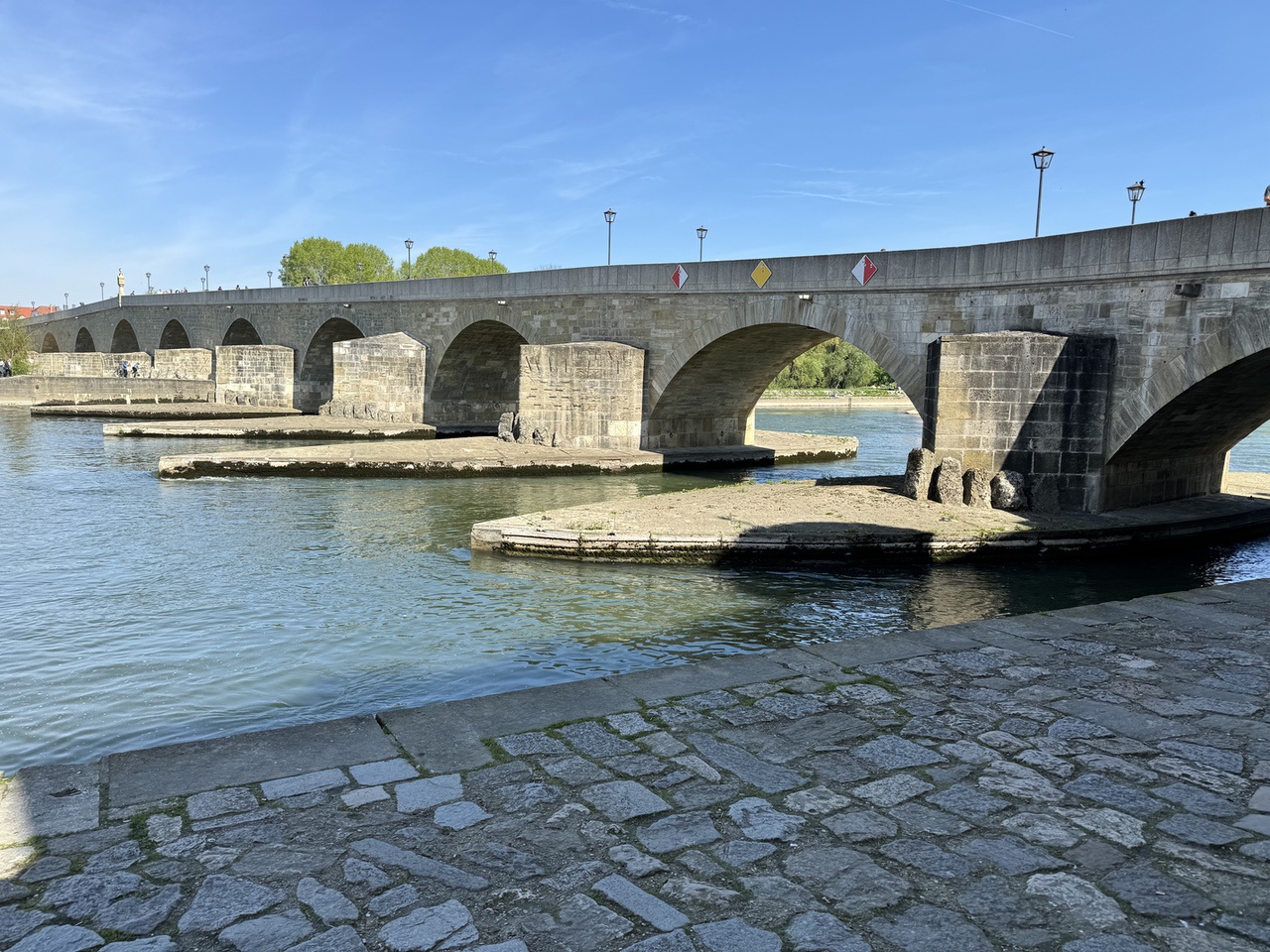
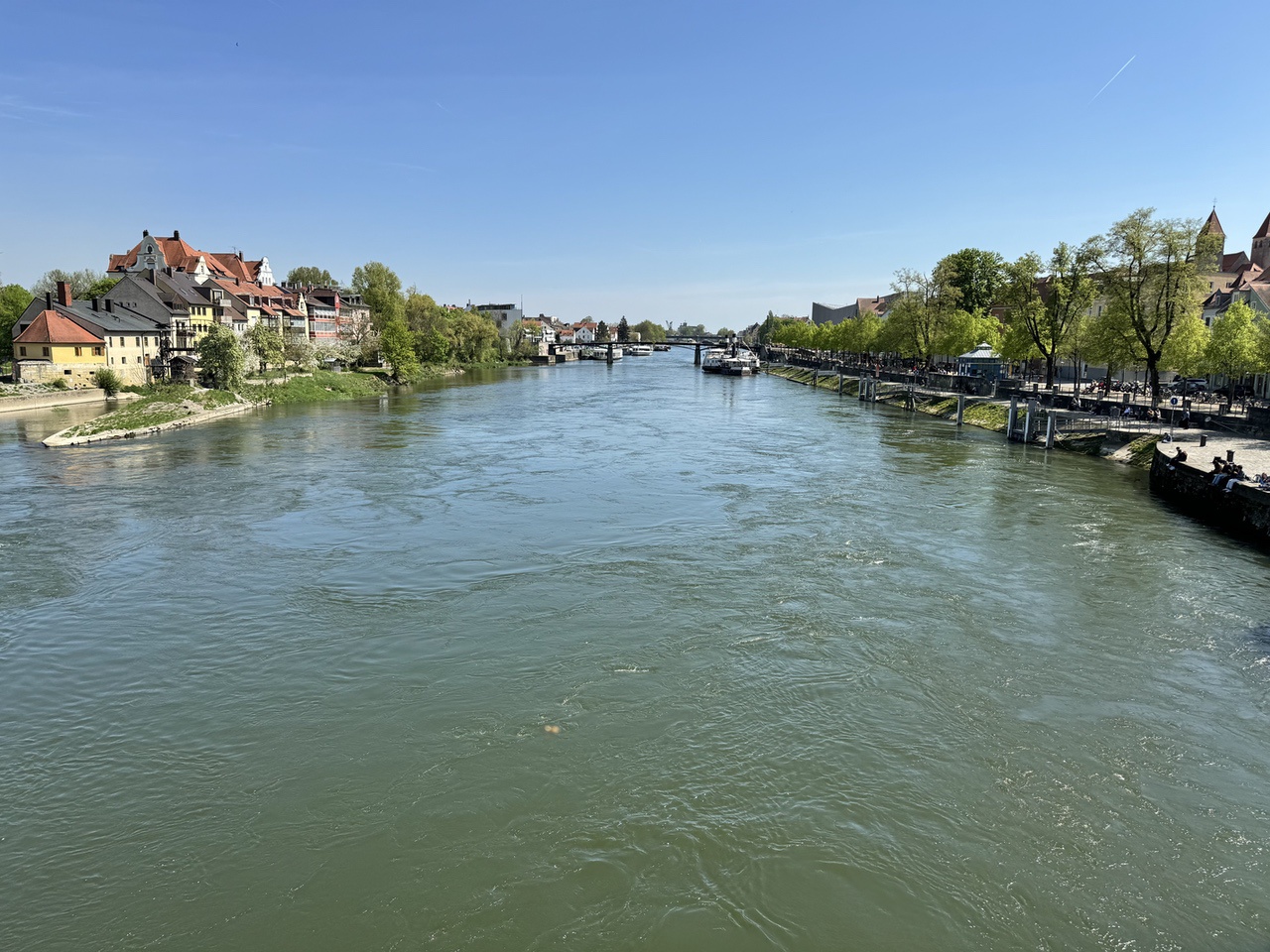
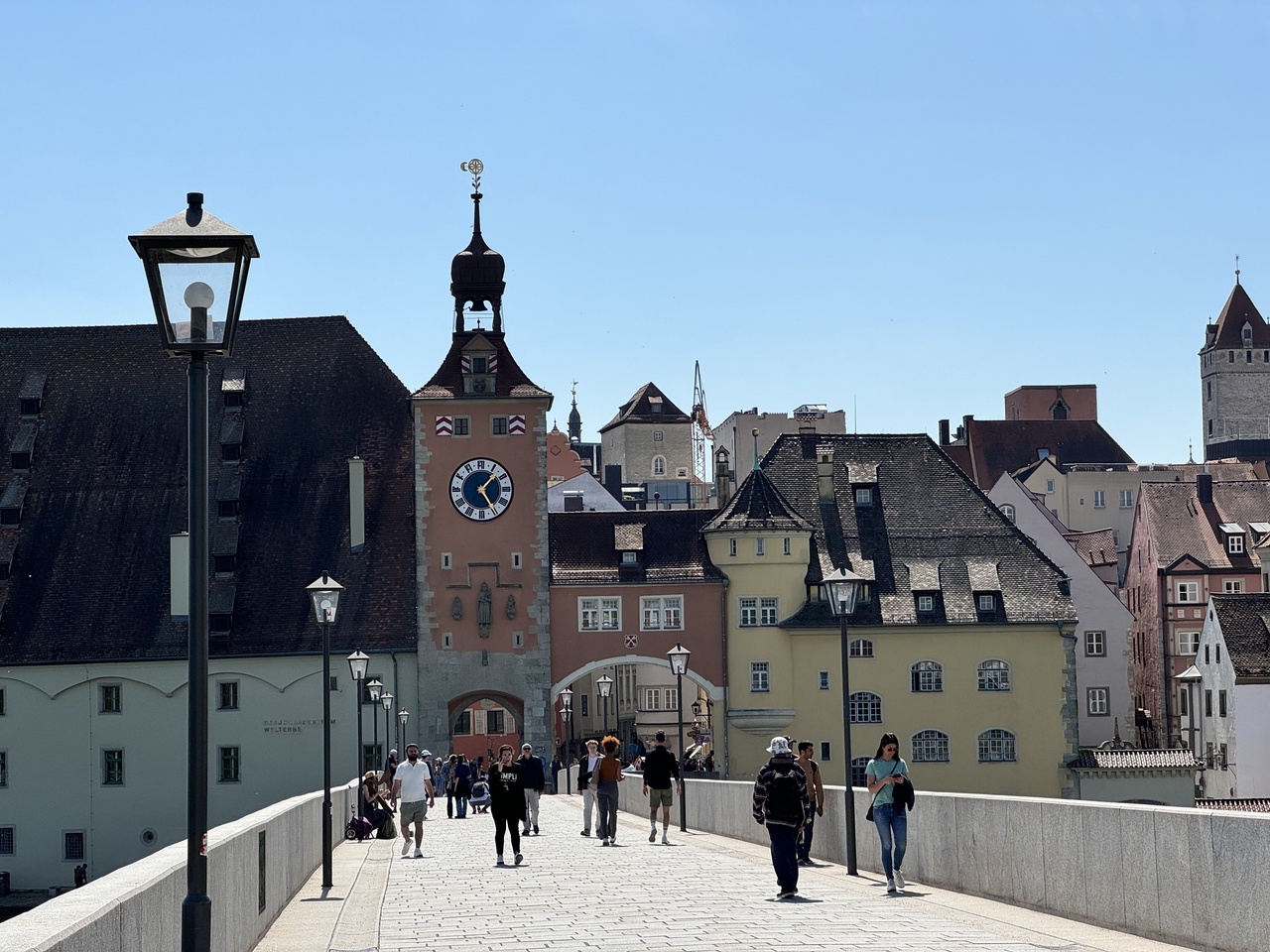
Vew of St. Peter’s Catherdral from the bridge
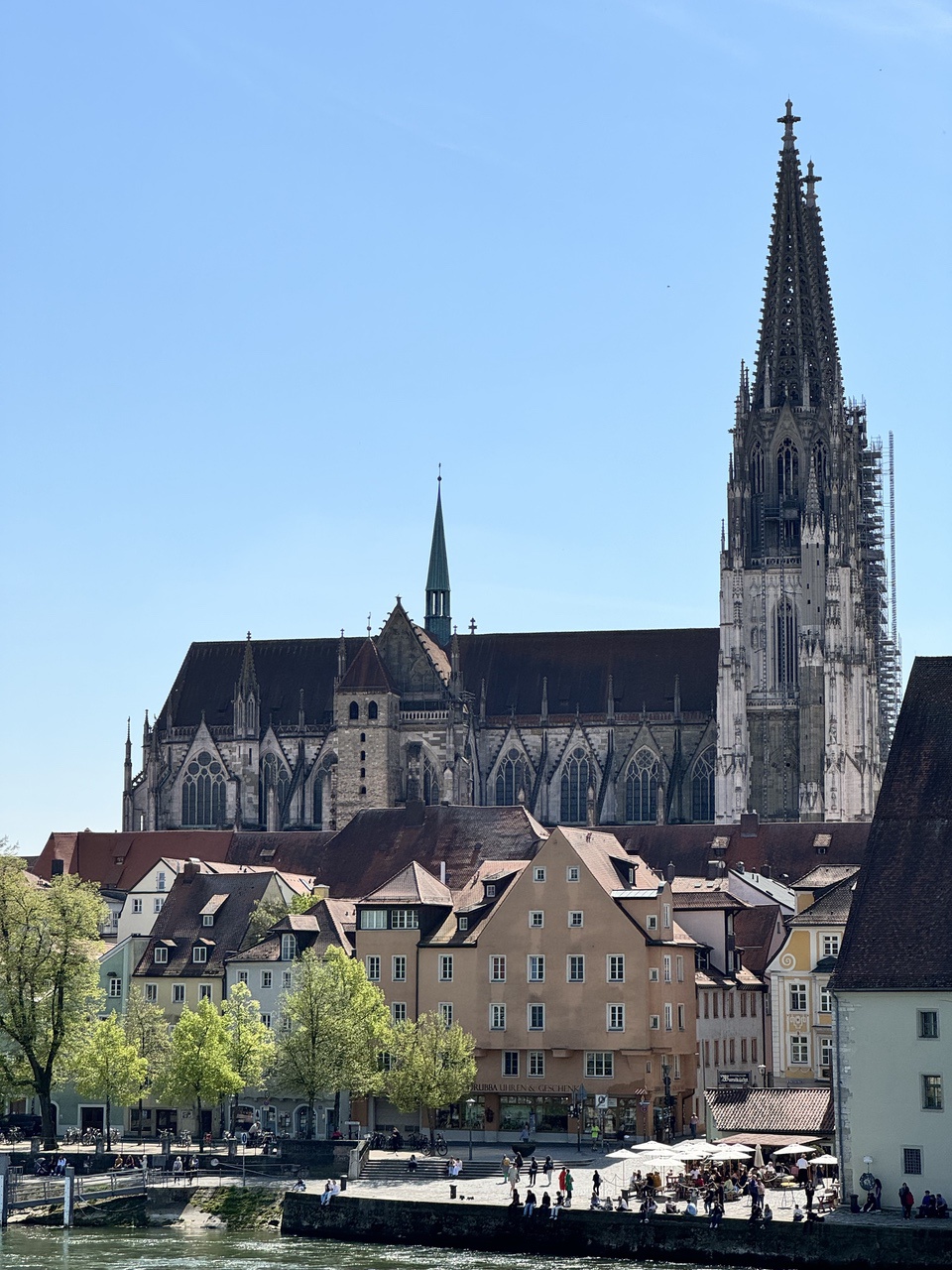
The Porta Praetoria Roman gate near the bridge was built in AD 179 by Emperor Marcus Aurelius stone gate in the northern wall of the Roman military camp known as Castra Regina.
Porta Praetoria Roman gate
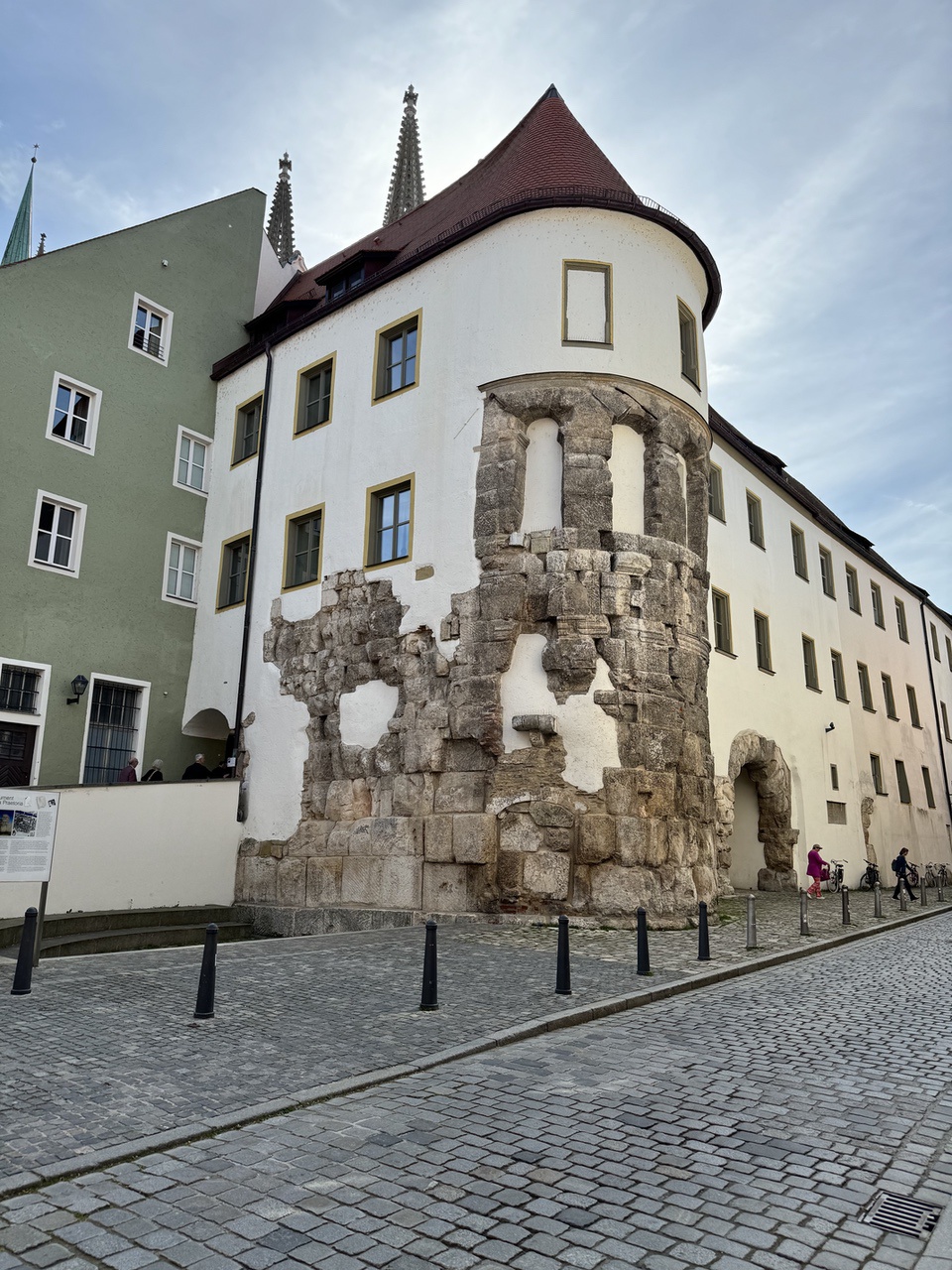
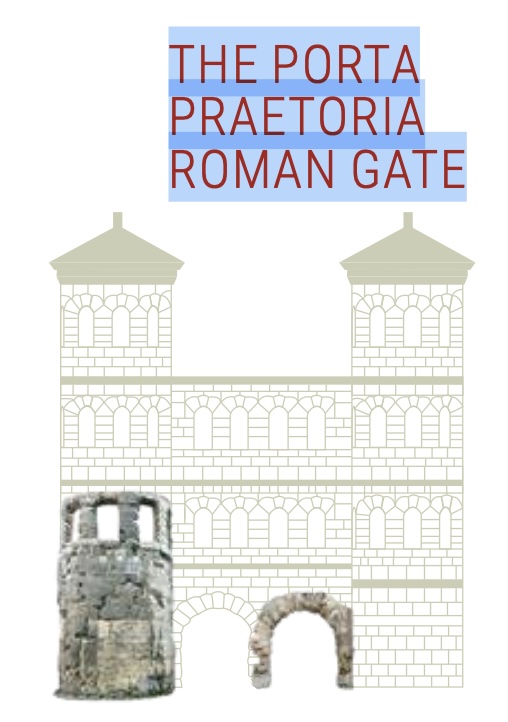
Altes Rathaus (Old Town Hall), which also has the tourist information center. The Altes Rathaus was built at the time Regensburg was elevated to the status of Free Imperial City in 1245. The Altes Rathaus’ heyday began in 1663, when it served as the exclusive venue for the Imperial Diet of the Holy Roman for nearly 150 years.
Old Town Hall
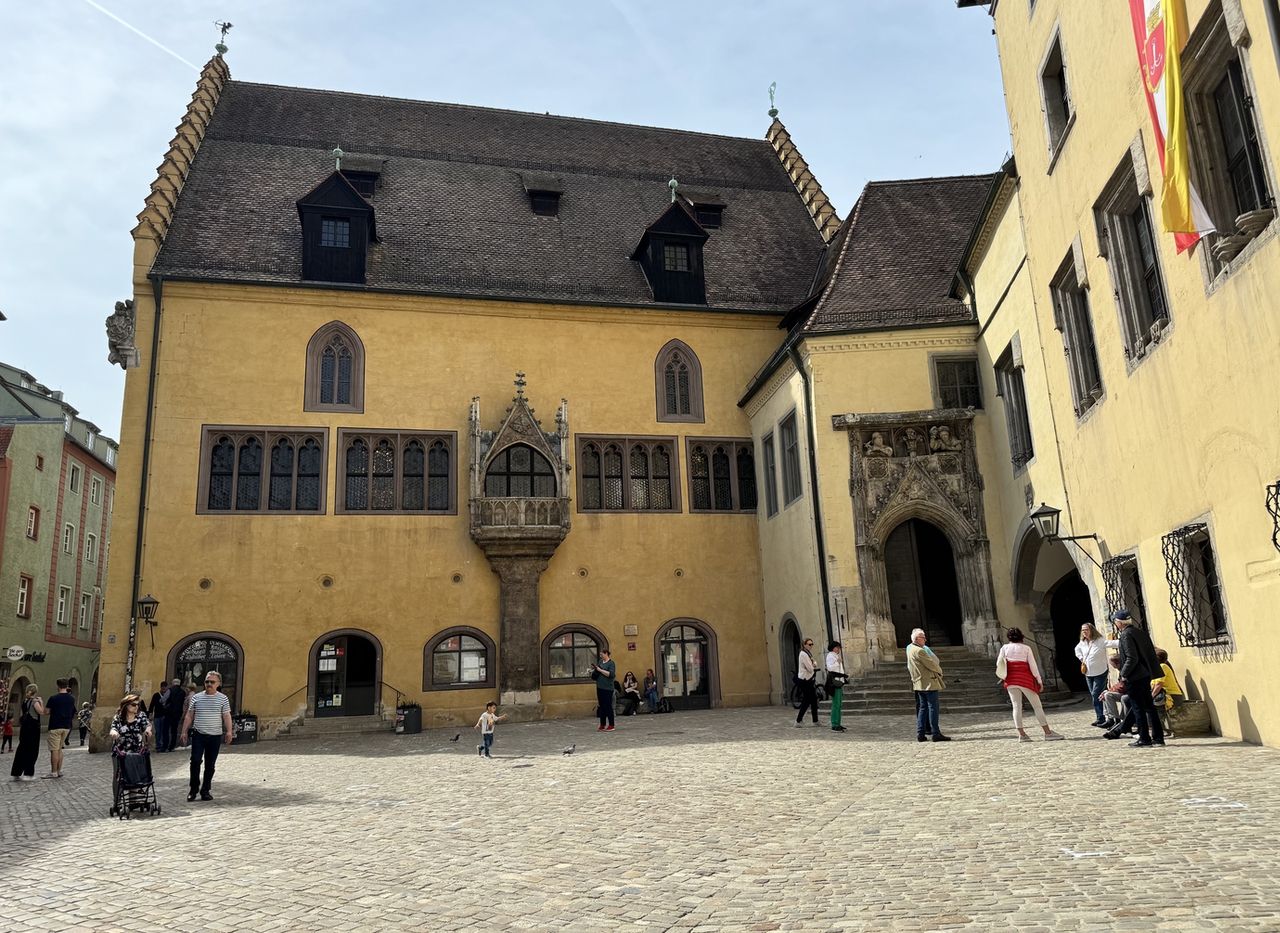
Dinner was at Regensburger Weissbräuhaus
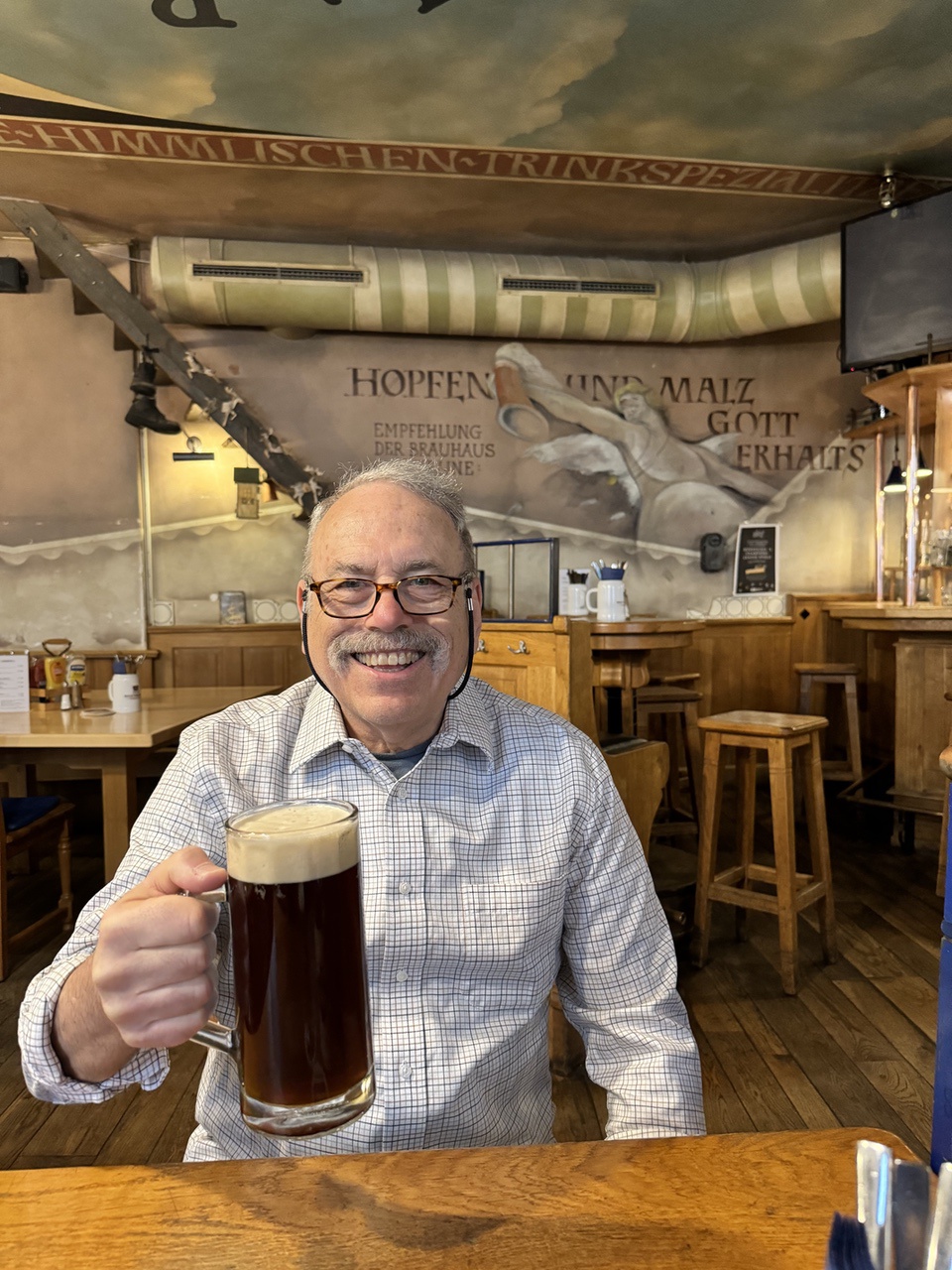
Links
Other posts that refer to this post:
--
Larry and Eileen Samberg









